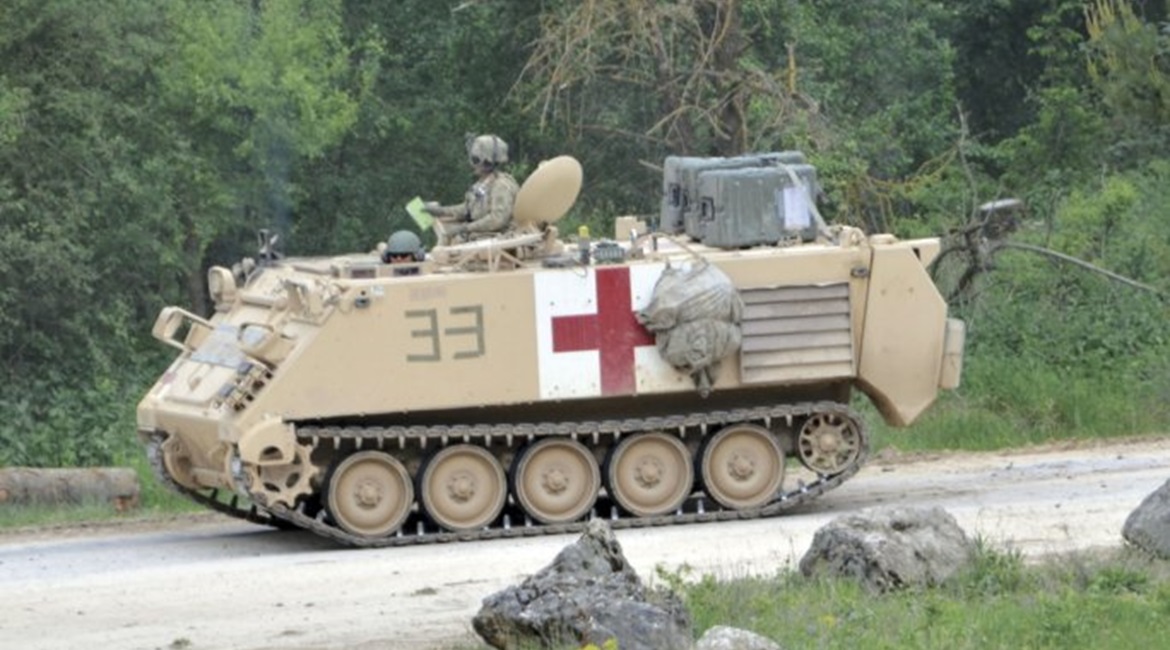
The US Army is on schedule to begin operational user testing of legacy M113 tracked armoured personnel carriers, converted to armed robotic platforms, later this year with real-world experimentation trials expected to inform future requirements for the Robotic Combat Vehicle (RCV) element of the service’s Next-Generation Combat Vehicle (NGCV) programme.

The US Army is converting some of its M113 armoured personnel carriers into armed robotic platforms to validate technologies that can support manned-unmanned teaming operations. (IHS Markit/Patrick Allen)
The converted M113s will act as surrogate vehicles for what a next-generation RCV could look like as part of the service’s plans to introduce manned-unmanned teaming (MUM-T) in ground manoeuvre combat. The army is currently looking at options for a light (L), medium (M), and heavy (H) RCV.
The vision for the RCV is to replicate similar capabilities already found in the air domain and enable soldiers to control robotic ground vehicles from a manned platform, reducing risk and increasing stand-off distances for personnel.
The US Army’s Tank Automotive Research, Development and Engineering Center (TARDEC) is leading these efforts, taking legacy M113s and adding appliqué “drive-by-wire” kits to enable teleoperated and autonomous operation.
“Right now, we are doing integration on the platforms and we are still doing our engineering shakedown and test,” Dr Robert Sadowski, TARDEC’s chief roboticist, told Jane’s .
“Fourth quarter of [fiscal year] 2019 is when weʼre targeting to have these things available for soldiers to test and play with the surrogates,” he added.
Safety testing is expected to take place at Aberdeen Proving Ground between June and August with the Army Test and Evaluation Command (ATEC).
Looking to read the full article?
Gain unlimited access to Janes news and more...




